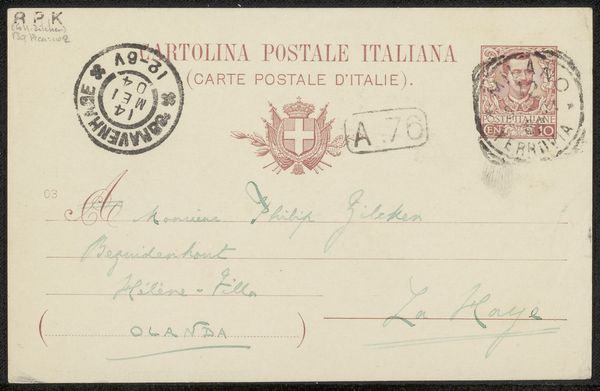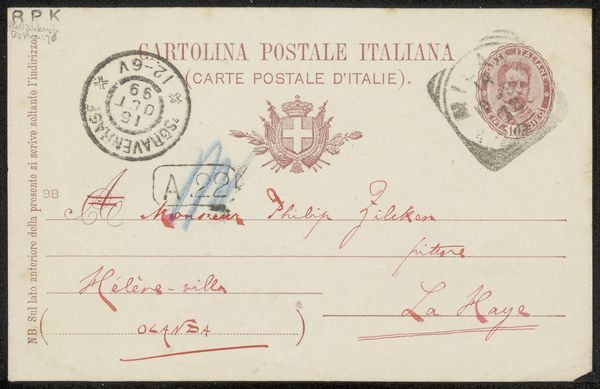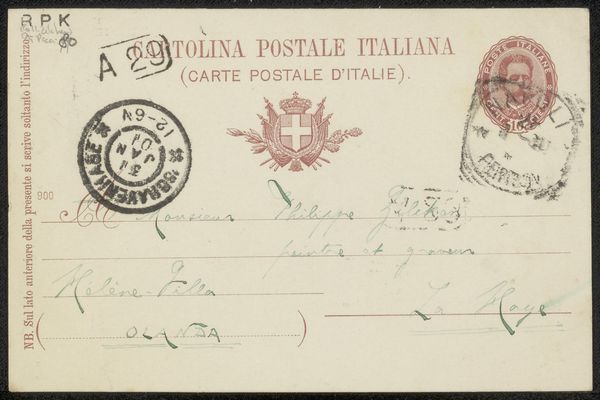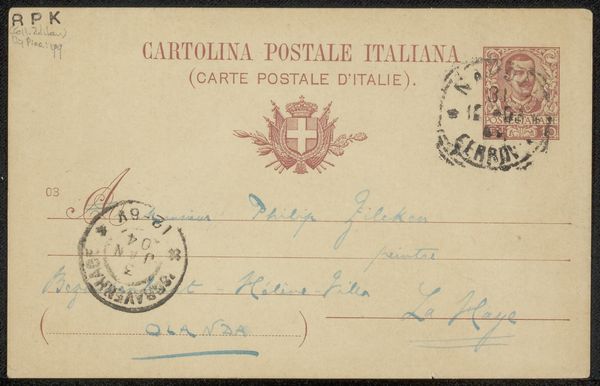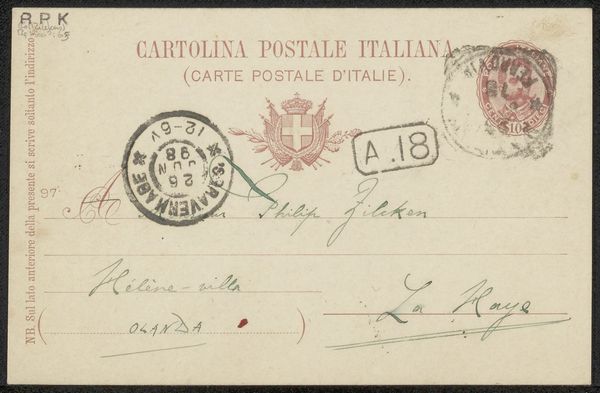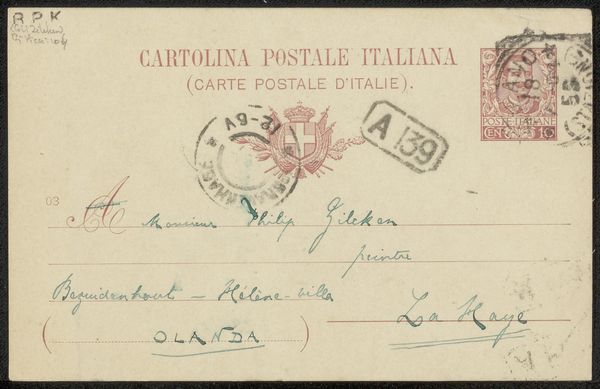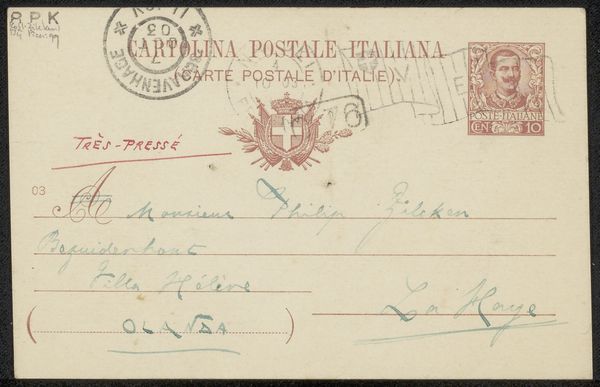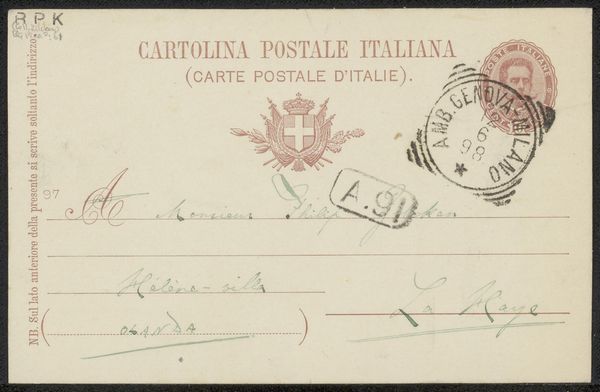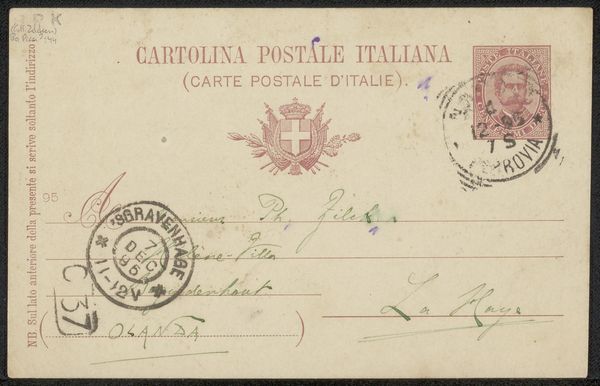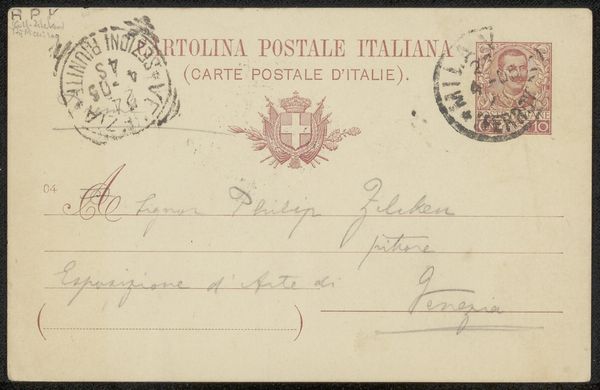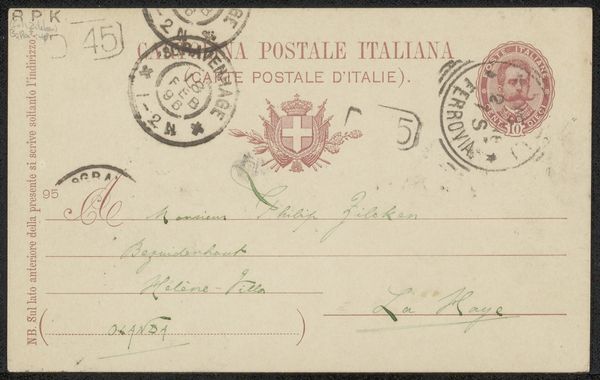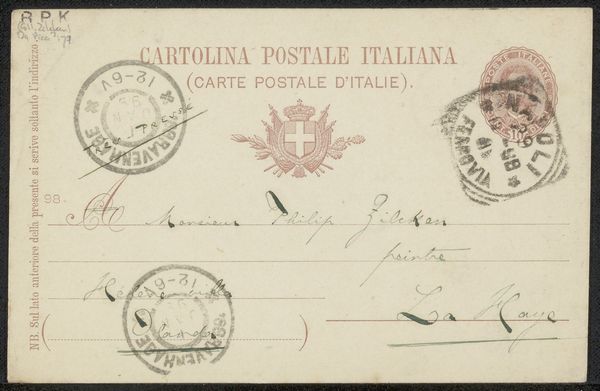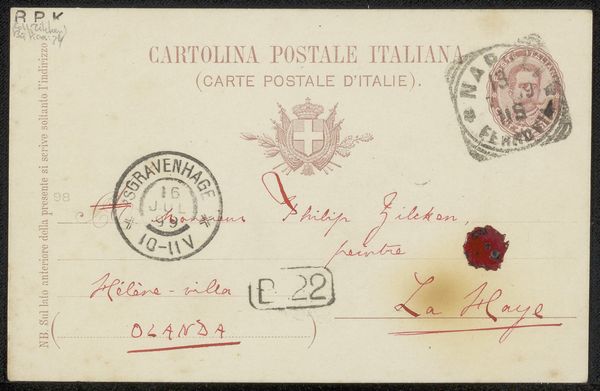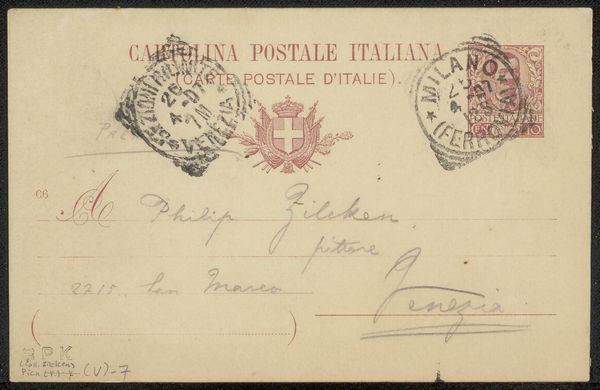
graphic-art, paper, ink
#
graphic-art
#
pen drawing
#
pen illustration
#
pen sketch
#
paper
#
personal sketchbook
#
ink
#
ink drawing experimentation
#
pen-ink sketch
#
ink colored
#
pen work
#
sketchbook drawing
#
sketchbook art
Copyright: Rijks Museum: Open Domain
Curator: Let’s examine this fascinating artifact, a "Briefkaart aan Philip Zilcken," possibly from 1898, crafted with ink on paper. Editor: At first glance, it evokes a quiet intimacy. The scale is diminutive, like a fleeting whisper across time, with layered textures suggesting the unseen hands and postal infrastructure that handled it. Curator: Indeed. Note how the stamps and seals punctuate the visual space. The cancellation marks don't merely deface, they create an additional layer of semiotic interest, a dialogue between the sender's message and the postal system's validation. Editor: Agreed, it reminds us that ephemera can offer so much sociohistorical depth when properly examined. I wonder about the paper quality and its relative value. This card likely crossed many hands; I consider what resources were used for its manufacture. Curator: That's an astute point. Structurally, consider the balance of inscription versus image, and also the usage of line: is it primarily decorative, or does it intend a communicative role? Editor: It also speaks volumes about interpersonal connectivity at the fin de siècle—that exchange between sender and receiver—through physical materials. Consider its manufacture: the harvesting of paper, crafting inks, printing templates. All complex chains of processes converge in this small token. Curator: Precisely! In our decoding, we can see an aesthetic layering beyond a mere greeting card. There's a poignancy in its palimpsestic effect, which provides not only a link to the sender and recipient, but something universally understandable. Editor: True, while also hinting at wider social histories—offering material insight and the importance of deconstructing art and context. Curator: A brief correspondence becomes, through artistic intention and happenstance, something remarkably complete in itself.
Comments
No comments
Be the first to comment and join the conversation on the ultimate creative platform.
